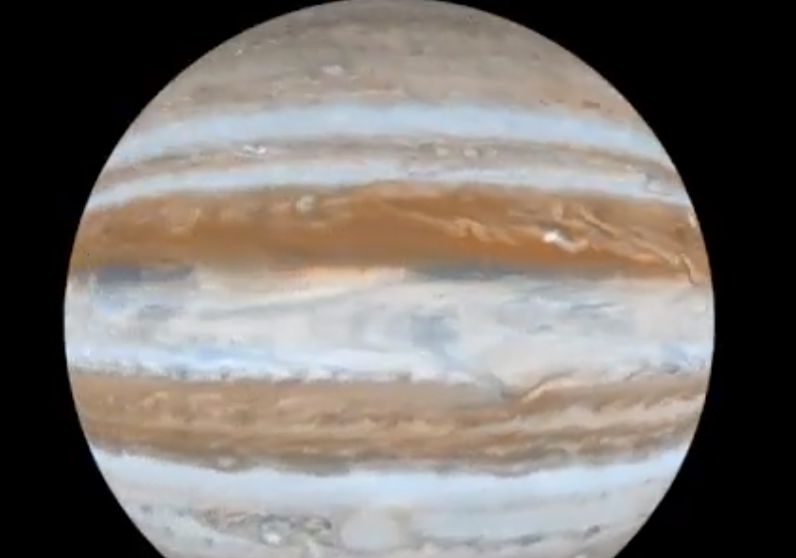Elon Musk has grand plans for humanity. But to colonize Mars, a supposedly lifeless planet, there are many challenges that perhaps even he has not finished debating in his own mind. Radiation is a problem, even for astronauts to simply leave Earth. We will either need to develop incredibly powerful radiation shields, or mankind will not leave our planet any time soon.
A massive solar storm that recently made headlines for making the aurora borealis visible as far south as North Carolina has also impacted Mars, raising concerns about the levels of radiation on the red planet. This solar event, which lit up the skies with stunning displays of light across much of the United States, affected not just Earth but also Mars, where it caused a similar auroral phenomenon.
As solar storms pummel the Red Planet, @MarsCuriosity and its radiation detector are preparing for future human explorers.
On May 20, Curiosity received a radiation dose equivalent to 30 chest X-rays. https://t.co/TDz6Nsm3Lz pic.twitter.com/L5c0faLqe7
— NASA Mars (@NASAMars) June 10, 2024
Data collected from NASA’s Odyssey and MAVEN orbiters, along with the Curiosity rover, has provided a clearer picture of the radiation environment on Mars. Unlike Earth, which has a magnetic field that directs charged particles toward the poles, Mars lost its magnetic field eons ago. Consequently, the entire Martian surface is susceptible to these particles, allowing auroras to be potentially visible planet-wide, assuming any observers.
NASA rover gets blasted by solar storm on Mars, captures footage https://t.co/yRuHDnTmMB
— Lifeboat Foundation (@LifeboatHQ) June 16, 2024
The impact of this storm on Mars was significant. Instruments aboard the Curiosity rover recorded radiation levels at approximately 8,100 micrograys, equivalent to the dose from 30 chest X-rays. Such exposure is concerning, especially considering that astronauts on Mars would face repeated exposures over the duration of their missions.
This data has significant implications for human exploration and potential colonization of Mars. Astronauts would not only face high radiation levels but could also experience visual distortions similar to those reported by astronauts on the International Space Station, who have seen what they describe as “fireworks” when they close their eyes during radiation storms.
Given these challenges, NASA scientists are considering various strategies for protecting future crews. Shielding will be a critical component of any habitation on Mars, with natural Martian features such as cliffsides or lava tubes possibly serving as protective shelters. These locations could provide natural barriers against radiation, thereby playing a crucial role in the design of Martian habitats.
Solar storm slams Mars in eerie new NASA footage https://t.co/jA5A71ALby pic.twitter.com/VlhVN4GFDd
— Marvelous Marvin ™ 𝕏 (@realmdlykins) June 15, 2024
Additionally, the high radiation environment could affect agriculture on Mars, a crucial element for long-term human presence. Since a trip to Mars takes about nine months, and astronauts would need to stay for at least three months before a return window opens, developing effective ways to grow food on the planet is imperative.
Key Points:
i. Widespread Impact: A massive solar storm that created stunning auroras as far south as North Carolina also affected Mars, showcasing similar auroral phenomena on the red planet.
ii. Radiation Data from Mars: Instruments on NASA’s Curiosity rover recorded high radiation levels on Mars, equivalent to 30 chest X-rays, which is a concern for future human missions.
iii. Mars’ Lack of Magnetic Field: Unlike Earth, Mars does not have a protective magnetic field, allowing charged particles from solar storms to hit the entire surface and potentially enabling planet-wide auroras.
iv. Implications for Human Safety: The high radiation levels pose significant health risks for astronauts, necessitating the development of effective shielding strategies, possibly utilizing Martian natural features like lava tubes for protection.
v. Future Research and Preparations: Continuous activity from the sunspot that caused the storm suggests more data will be available to help plan safe human exploration and habitation on Mars, including agriculture considerations.
Fallon Jacobson – Reprinted with permission of Whatfinger News



